Culturally, Louisiana is one of the most diverse and intriguing states in the United States. It is a unique blend of Native American, Caribbean, African, French, Spanish, and British influences. This cultural fusion can be seen in the local cuisine, music, dance, language, folklore, and architecture. Because of its strategic position at the mouth of the Mississippi River, Louisiana has had a significant role to play throughout American history. In this article, we’ll explore some of the oldest cities in Louisiana to get just a taste of all this state has to offer.
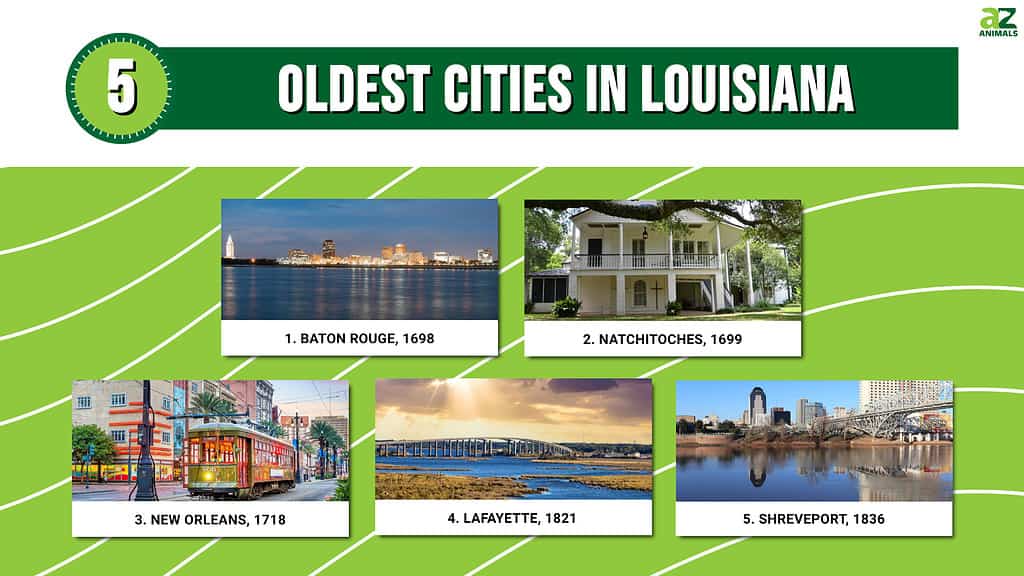
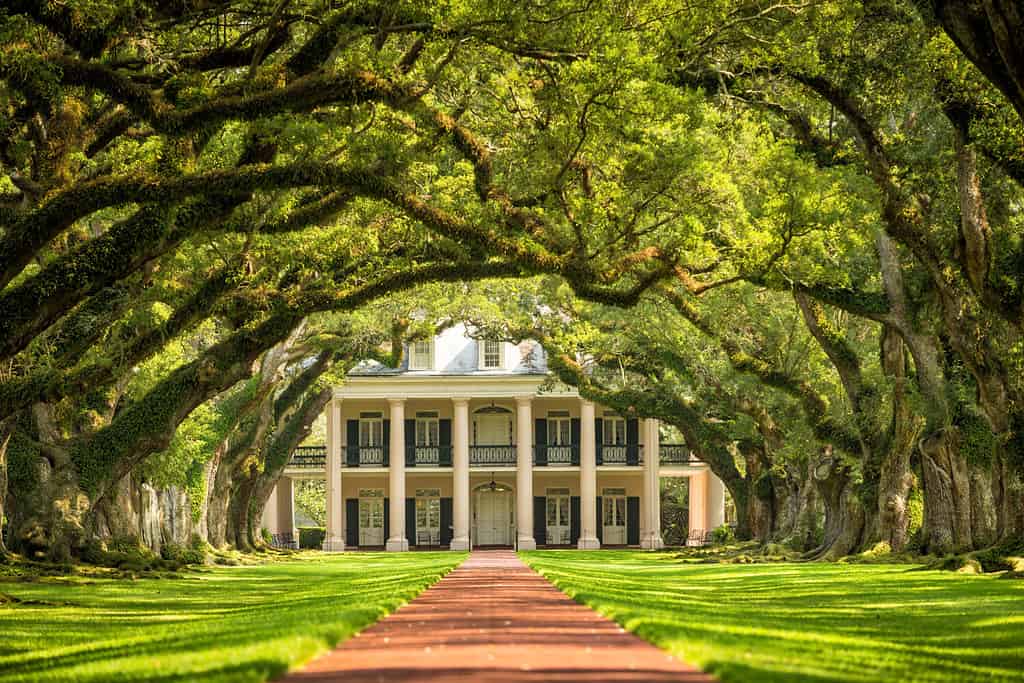
Oak Alley Plantation, Louisiana.
©f11photo/Shutterstock.com
1. Baton Rouge, 1698 (population 227,470)
Baton Rouge is one of the oldest cities in Louisiana, having been founded in 1698. It’s the state capital and is located about 80 miles from New Orleans. Because it sits on a bluff, it has not been subject to flooding in the way New Orleans has. It is the farthest inland that ocean-going vessels can navigate on the Mississippi River. A portion of the city’s population were French settlers originating in Acadia (present-day Nova Scotia), who relocated to Louisiana during the 7 Years’ War when Britain was taking over France’s Canadian possessions. Over time, these Acadians became known colloquially as “Cajuns.” Baton Rouge today has a strong economy and a diverse population. It was ranked one of the “Top 10 Places for Young Adults” in 2010 by portfolio.com.
Some of the tourist attractions in the area are the USS Kidd Veterans Museum, a World War II destroyer that can be reserved for special events. Magnolia Mound Plantation, built in 1791, is noteworthy as it shows the influence of French Creole architectural styles. The Bluebonnet Swamp Nature Center is home to hundreds of different local species, including birds, raccoons, coyotes, foxes, armadillos, and more. It’s a good place to get to know the local fauna. If you’re interested in more exotic species, check out the Baton Rouge Zoo with nearly 1,000 species in natural outdoor habitats. It also has a children’s area and offers train rides. Visiting downtown Baton Rouge at night might help explain why it’s such a popular city for young adults. It has a vibrant nightlife, with all bars, casinos, dancing, and dining you can handle.
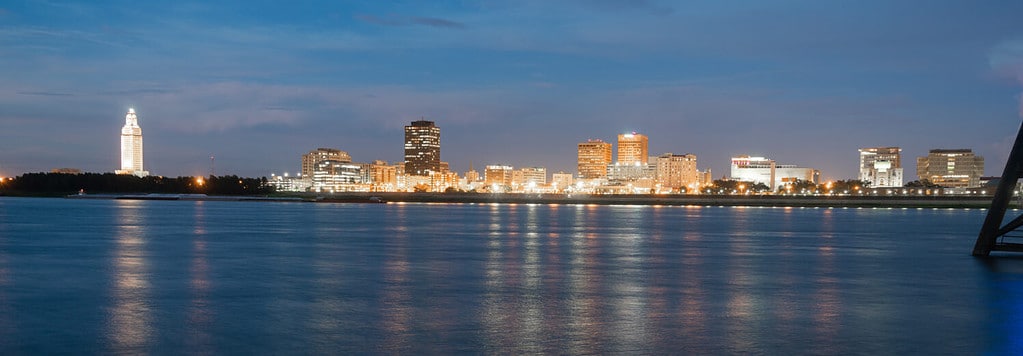
Baton Rouge has an active nightlife that makes this a popular city with young adults.
©Real Window Creative/Shutterstock.com
2. Natchitoches, 1699 (population 18,039)
Natchitoches (pronounced “nack-a-tish”) was named for a nearby Native American tribe. It was founded in 1699 by a French Canadian explorer in 1699. One of the main purposes of the settlement was to serve as a trading post for trade with Mexico, which was then under Spanish control. Later, under the American administration, it became a major shipping center in the cotton trade. Today the city’s downtown is a National Historic District, with period stores and buildings converted into shops, restaurants, and some 50 bed-and-breakfasts. There is also a nearby oxbow lake that is used as a spring break training location for university crew teams from states around the deep south and lower Midwest.
Visitors can check out Fort St. John Baptiste, a replica of a French fort originally constructed on the site in 1716. The Steel Magnolia house was used in the 1989 hit film Steel Magnolias. And get this . . . it is a bed and breakfast. You can even stay in the pink “Shelby” room that was featured in the film. Cane River Creole National Park includes the Oakland Plantation, which you can tour, and the Magnolia Plantation, which is a private residence, but the grounds and trails are open to the public. The Christmas holiday is a great time to plan your trip, as you can see the annual Natchitoches Christmas Festival of Lights. The entire downtown and riverbank are illuminated with 300,000 lights for 45 nights. In addition, there are extended shopping hours and fireworks displays. Be sure to try the gumbo and the “gator on a stick.”

Oakland Plantation, part of the Cane River Creole National Historical Park located in Natchitoches, Louisiana.
©Danae Abreu/Shutterstock.com
3. New Orleans, 1718 (population 383,997)
New Orleans was founded in 1718 by the French Mississippi Company and named in honor of Philippe II, Duke of Orléans, the regent of King Louis XV. Its strategic location near the mouth of the Mississippi River gave it a “gatekeeping” position to control and profit from the movement of vessels between the interior of the continent and the rest of the world. Thomas Jefferson and other early leaders of the United States believed control of New Orleans was essential for the development of the parts of the new country west of the Appalachian Mountains. Jefferson sent envoys to negotiate the purchase of the city and surrounding territory but was surprised to find Napoleon was ready to sell all its territory encompassing most of the Mississippi watershed. The Louisiana Purchase of 1803 doubled the size of the United States and goes down in history as probably the best business deal that has ever been done. New Orleans today is an important center for the production and export of petroleum products.
Of course, the cultural event New Orleans is most recognized for today is Marti Gras, an exuberant 2-week celebration focused on Bourbon Street with parades, masquerade balls, music, free-flowing alcohol, and cheap beads and tokens tossed to onlookers and revelers. It takes place every year in the weeks leading up to Lent, a 40-day fast before Easter in the Catholic calendar. Outside of this season, visitors enjoy touring, dining, and listening to jazz music in the French Quarter. You can take steamboat dinner cruises to learn more about the city and its history and sample local cuisine. The St. Louis Cemetery may not seem like a pleasant place to visit, but ornate above-ground tombs are typical and interesting. Fans of the horror writer Anne Rice may be especially interested in touring the historic streets of the Garden District where she grew up and where some of her novels were set. The French Market is also recommended, with its 6 blocks of shops and restaurants.

Streetcars in downtown New Orleans add to its scenic charm.
©f11photo/Shutterstock.com
4. Lafayette, 1821 (population 121,374)
Lafayette was named for the famous Marquis de Lafayette, a French aristocrat and military officer who fought in the American and French revolutions and is considered a hero in both countries. The city became a significant settlement magnet for Acadians from Canada, and thus, a center of Cajun culture. Sugar plantations were a mainstay of the local economy but were supplanted by the oil industry in the 1940s. It has a vibrant, diverse culture and arts scene today.
Downtown Lafayette has a lot of specialty boutique shops and restaurants with authentic cuisine. Be sure to try the gumbo! Acadian Village is a must-see for history enthusiasts. It has 11 buildings that replicate an Acadian village of the 1800s, including 7 authentic homes from the period. Avery Island in the bayou country has a couple of nature reserves: Jungle Gardens and Bird City, where you can see native flowers, egrets, alligators, and more. Cypress Island is a nature preserve with 9,500 acres of hardwood forest and cypress swamps. You can really get into the heart of the bayou on a Cajun Swamp Tour by paddleboat or airboat. If you like to keep things spicy, the Tabasco Pepper Sauce Factory has tours to learn about how the sauce is produced and bottled. Samples, anyone?
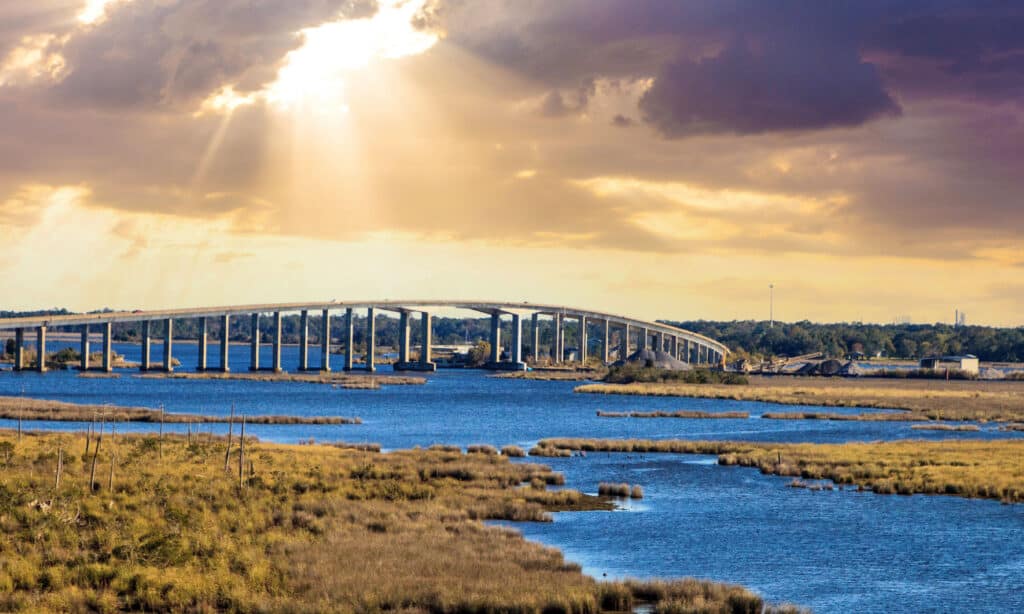
Atchafalaya Basin Bridge runs from Lafayette to Baton Rouge, Louisiana.
©iStock.com/LagunaticPhoto
5. Shreveport, 1836 (population 187,593)
Last on our list of some of the oldest cities in Louisiana is Shreveport. This city was intentionally constructed by the Shreve company at the place where the Red River meteor the Texas Trail, a major overland trade route. The city served as the capital of Louisiana for much of the Civil War. In 1941 it was the focus of a major U.S. Army war game that simulated capturing an urban area. Omar Bradley, Dwight Eisenhower, and George Patton were among the generals who took part in this exercise, which helped prepare the Army for the liberation of Europe.
Shreveport today has a number of attractions that make it an especially kid-friendly vacation spot. The Jubilee Zoo and the Shreveport Aquarium both give you the chance to get up close and personal with animals and marine life. If the aquarium whets your appetite for swimming, head over to the Splash Kingdom Waterpark with its 10 high-speed water slides, lazy river, huge wave pool, sand volleyball, and gentler water experiences for smaller children. Walter B. Jacobs Memorial Nature Park has 160 acres of forest and 5 miles of walking trails. After all that, you’ll want to eat at Ferrier’s Rollin’ In the Dough – a bakery and restaurant serving baked treats of all kinds as well as sandwiches and burgers with made-from-scratch buns.
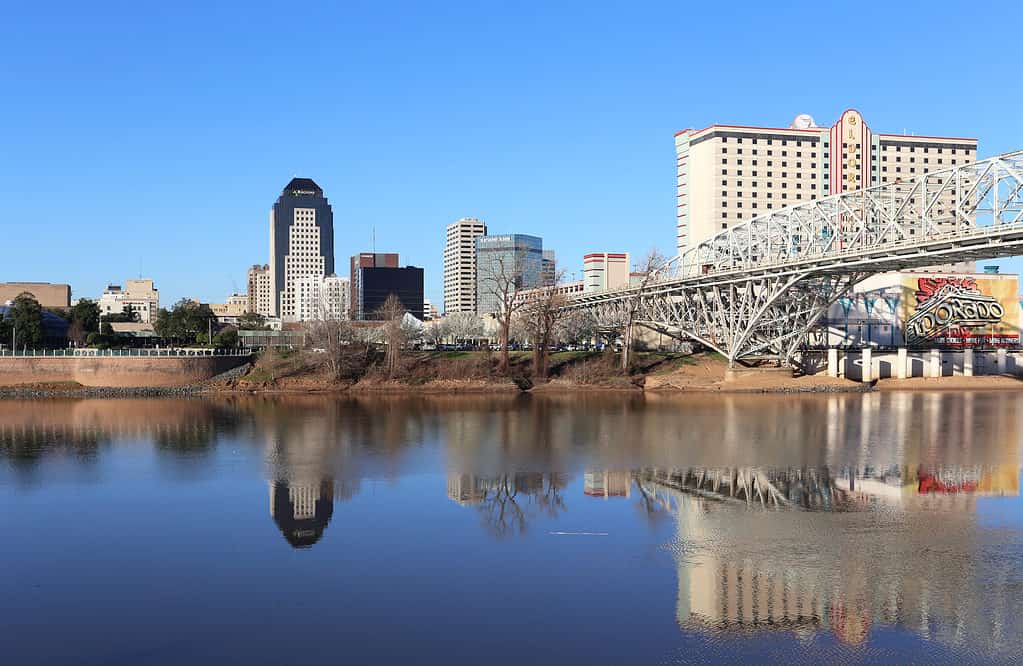
During much of the Civil War, Shreveport was the capital of Louisiana.
©Katherine Welles/Shutterstock.com
Enjoy Southern Hospitality
Maybe you’ve heard folks in the South have a reputation for hospitality. It’s hard to get much more South than Louisiana, so it’s a great place for you to check that theory out for yourself. There are so many different options, though. What are some experiences you absolutely must have if you’re going to visit this state?
- Eat gumbo, and gator (if you’re brave enough)
- Listen to live Jazz
- See the Mississippi River and the Bayous
- Hear the Cajun accent
- Learn about the state’s history
There’s tons more to do and see, of course, but that’s our suggested starting list. What else will you add to it?
Summary of 5 of the Oldest Cities in Louisiana
| Rank | City | Date Founded/Incorporated |
|---|---|---|
| 1 | Baton Rouge | 1698 |
| 2 | Natchitoches | 1699 |
| 3 | New Orleans | 1718 |
| 4 | Lafayette | 1821 |
| 5 | Shreveport | 1836 |
The photo featured at the top of this post is © f11photo/Shutterstock.com
Thank you for reading! Have some feedback for us? Contact the AZ Animals editorial team.






